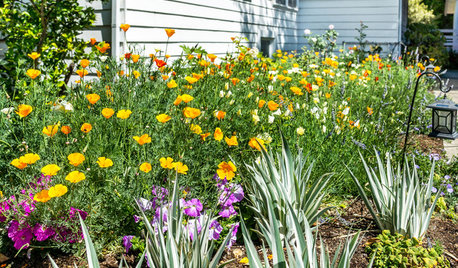Salvias listed in The Global Compendium of Weeds
rich_dufresne
17 years ago
Related Stories

INSPIRING GARDENSNative Plants Bring 10 Southern California Front-Yard Gardens to Life
Rare plants, rain gardens and wildlife habitats are just a few of the features showcased on the 2016 Theodore Payne Native Plant Garden Tour
Full Story
LAWN ALTERNATIVESStop Fighting the Patchy Lawn!
Here are 3 situations where a garden may be a better idea than more turfgrass
Full Story
GARDENING FOR BUTTERFLIESGardening for the Bees, and Why It’s a Good Thing
When you discover how hard bees work for our food supply, you may never garden without them in mind again
Full Story
LANDSCAPE DESIGN10 Ideas for a Creative, Water-Conscious Yard
Check out these tips for a great-looking outdoor area that needs less water
Full Story
GARDENING FOR BUTTERFLIESBring on the Birds: Natural Habitat Ideas for Gardens of All Sizes
Provide nesting, watering and perching spots inspired by the Costa Rican jungle and watch the birds flock on over
Full Story





robinmi_gw
rich_dufresneOriginal Author
Related Professionals
Brooklyn Center Landscape Architects & Landscape Designers · East Patchogue Landscape Architects & Landscape Designers · Allentown Landscape Contractors · Belvedere Park Landscape Contractors · Fishers Landscape Contractors · Glendale Heights Landscape Contractors · Hendersonville Landscape Contractors · La Vista Landscape Contractors · Mason Landscape Contractors · Mendota Heights Landscape Contractors · Merced Landscape Contractors · Salem Landscape Contractors · Westchester Landscape Contractors · Chesterfield Siding & Exteriors · Downers Grove Siding & ExteriorsCA Kate z9
rich_dufresneOriginal Author
CA Kate z9
vera_eastern_wa